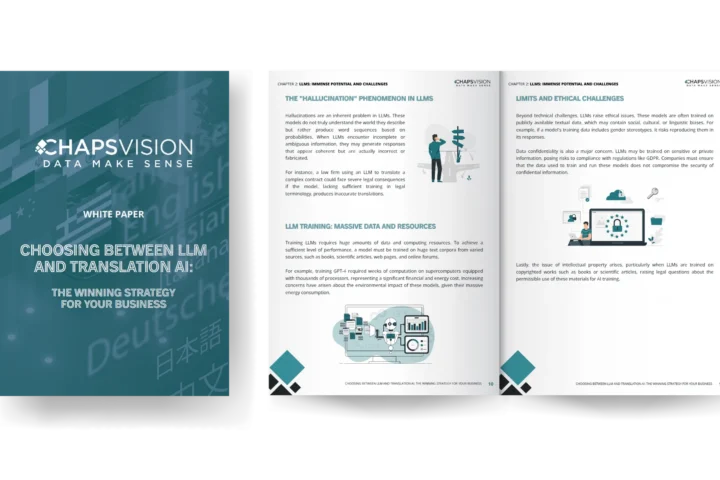In today’s interconnected world, businesses aren’t confined to local boundaries and neither are their projects. With the advent of remote communication technologies, team members can work from anywhere and still collaborate on a single project to achieve common business outcomes. Global project management is a multifaceted discipline that involves planning, coordinating, and executing projects across international borders.
Besides leadership skills, global project managers require a nuanced approach to navigating cultural and linguistic differences. They must coordinate between time zones, understand diverse work cultures, and communicate in multiple languages.
This article explores global project management challenges and offers actionable insights and strategies to overcome them. Your projects will not only reach completion but thrive in this global setting.
Defining global projects
A project is traditionally understood as a temporary endeavor to create a unique product, service, or result. When the term ‘global’ is appended, it signifies the cross-border nature of the project, involving stakeholders from multiple countries and diverse cultural, linguistic, and socio-economic backgrounds who work together to achieve a shared goal. For example:
- A tech company based in Silicon Valley has software developers in India, UI/UX designers in Sweden, and quality assurance teams in the Philippines.
- A hotel construction project in Thailand has its architectural firm in Britain, the construction materials are sourced from various African and European countries, and the workforce is primarily local.
- An American brand launching a new product in Japan employs packaging designers from Brazil, product manufacturers in China, and marketing teams in Japan.
From international expertise and new market access to cost-efficient supply chain management, global projects present a range of opportunities. They promise innovative solutions stemming from diverse perspectives but also necessitate an understanding of a wide array of operational, cultural, and linguistic nuances.
Communication challenges in global project management
Even with cutting-edge communication technologies at our fingertips, the path to seamless communication isn’t always straightforward. Even if everyone communicates in English, nuances in accents, pronunciation, and colloquialisms can lead to misunderstandings. For example, the phrase “Let’s table this discussion” means postponing the topic in American English but bringing it for discussion in British English. Such nuances can cause significant confusion in project directions.
Terminology—even in the same industry, can vary between regions. Consider the concept of “positioning” in branding. In the US, when marketers refer to “positioning,” they typically mean how a brand differentiates itself in the marketplace, carving out a unique space in the consumers’ minds. However, in some European contexts, particularly in countries like France, the term “positioning” might be understood more literally, referring to a product’s physical placement or distribution strategy in stores. If a European team suggests revisiting the “positioning” strategy, they might want to review distribution, but an American team might consider branding differentiation. Such nuances, if overlooked, can lead to misaligned strategies and lost opportunities.
Additionally, the nature of written communication in virtual spaces poses its own set of challenges. Written feedback, devoid of vocal tone and facial expression, can sometimes come across as harsher than intended, leading to unintended conflicts or demotivation.
Cultural challenges in global project management
Cultural differences are among the most significant barriers global project managers face in achieving optimal outcomes. Workplace culture refers to the shared values, behaviors, and beliefs that shape the environment and interactions within an organization. Differences can arise in:
Decision-making processes
In countries like Japan, decisions are often made collectively, valuing consensus over individual assertion, whereas in the US, a more direct and individualistic approach might be preferred. Thus, a Japanese team might take longer to provide feedback as they consult with each member, while an American counterpart could misconstrue this as indecisiveness or delay.
Hierarchy and respect
In many Asian cultures, hierarchical structures are deeply ingrained, and showing respect to superiors is paramount. For instance, a junior team member from India might hesitate to voice concerns directly to a senior, even if they spot a glaring issue, to avoid appearing disrespectful.
Communication styles
While Nordic cultures might value straightforwardness and brevity, many Latin cultures emphasize building personal relationships and engaging in more extended conversational exchanges before delving into business matters. Similarly, high-context cultures, such as many Asian countries, often rely on implied or shared knowledge without everything being verbally expressed. In contrast, low-context cultures, like the U.S. or Germany, expect explicit and detailed communication. This difference can lead to one party feeling overwhelmed with excessive details while the other feels under-informed.
Non-verbal cues
Non-verbal cues, vital in face-to-face communication, often get lost in virtual settings. A nod in one culture might signify agreement, but in another, it could merely mean acknowledgment without agreement. The absence of these cues can lead to misinterpretations in the virtual workspace.
Feedback mechanisms
In Western cultures, constructive criticism is direct and to the point. In countries like China, feedback might be delivered subtly, couched in positive affirmations to maintain harmony and face. The Western team might perceive success, but the Chinese team may be very unhappy with how work is delivered.
Perception of time
In some cultures, time is seen as linear, emphasizing punctuality and deadlines (e.g., Germany). In contrast, other cultures view time more fluidly, placing more importance on relationships and organic processes (e.g., many African cultures). This can impact delivery estimates and meeting schedules.
Holidays and work Hours
A global project manager must be mindful of varying national holidays, religious observances, and typical work hours. For instance, the workweek in most Middle Eastern countries is Sunday to Thursday, contrasting the typical Monday to Friday in the West. Some countries may be used to long holiday breaks in July or December, while others are used to working all year round.
Overcoming challenges: strategies and best practices
Global project management requires technology, training, and awareness for project success. Here are some overarching strategies to address the barriers faced:
Cultural sensitivity training
Initiate cultural sensitivity training sessions that foster a deeper understanding of cultural nuances, enabling team members to collaborate respectfully and efficiently. Such training can complement real-world examples, promoting a proactive approach to cross-cultural communication.
Unified communication tools and protocols
Consistency can significantly reduce misunderstandings. Consolidate team communications with a standardized set of tools that everyone is trained on. Moreover, set clear communication protocols: for instance, consider designating certain times as “quiet hours” to respect different time zones or establish a common business language or lexicon to avoid linguistic confusion.
Regular feedback mechanisms
Establish a routine of consistent check-ins, fostering an environment where team members can voice concerns or seek clarifications. Additionally, encourage an open feedback culture. This can involve anonymous feedback tools, allowing those from cultures hesitant to provide direct criticism to voice their thoughts without reservation.
Diverse project leadership
Incorporate diversity within the project leadership team. Leaders familiar with the cultures of various team members can bridge misunderstandings, offer valuable insights, and ensure that cultural considerations are integrated into decision-making processes.
Shared calendars and flexible deadlines
Implement a shared calendar system that considers all involved regions’ major holidays and work hours. This preemptively manages expectations and ensures team members aren’t caught off guard. Further, while deadlines are crucial, offering some flexibility, considering the varying work approaches and time perceptions, can ensure smoother project execution.
Role of Machine Translation in global project management
While English might be a common business language, only some are comfortable expressing complex details in it. Machine translation tools allow team members to communicate in their native language, ensuring clarity and reducing potential misunderstandings. Its integration into global project management cannot be overstated.
Machine translation has rapidly evolved in the last decade, making significant strides in accuracy and context recognition. It is substantially more cost-effective and faster for translating project documents like requirements, contracts, project plans, and deliverables. Team members can instantly translate content like emails, documents, or chat messages to grasp the essence of communications, even in a language they aren’t proficient in.
Modern project management and collaboration tools often have built-in translation features that allow integrations with third-party translation apps. They minimize linguistic barriers as team members collaborate on shared platforms.
Machine Translation tools can personnalize and customize translation models with company data or models specialised in the company domain. ..and for some of them, all the data is secure and protected.
Conclusion
Global project management is critical for brands seeking to target new markets and increase revenue opportunities. However, cultural and linguistic barriers can create hurdles that prevent projects from taking off. Machine translation technologies, collaborative apps, training, and international management strategies are essential to keep projects on track. But at the heart of global collaboration lies a simple truth: understanding and respecting our differences. By embracing the ethos of unity in diversity, teams can ensure that their global projects are completed successfully.






